JWM study on Ellesmere in far north reveals a stable, but perhaps vulnerable, relationship between predators and prey
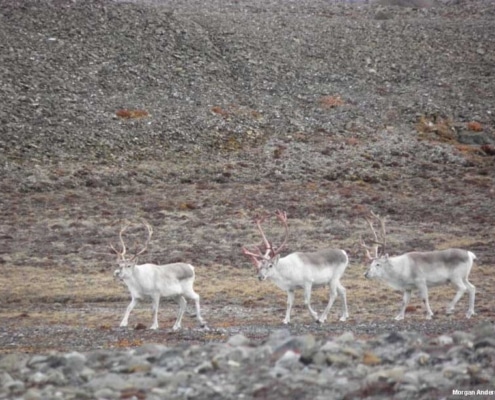
There shouldn’t be any trees on Ellesmere Island. As the northernmost island of Canada, even the south coast lies hundreds of miles north of the tree line. So, as Morgan Anderson and her colleagues trekked through the mountainous landscape on a mission to learn more about Canada’s northernmost wolf packs, she was surprised to encounter tree stumps. That is, until she realized that they were petrified remains dating back to a warmer time of the Earth when Ellesmere didn’t sit so far north. They were likely eons older than the undated stone rings the team would occasionally find in their campsites marking past tents from the pre-Inuit Dorset, Thule or other cultures that hunted muskoxen there in centuries past.
“Nunavut’s its own world,” said TWS member Anderson, a senior wildlife biologist with the British Columbia Ministry of Water, Land and Resource Stewardship. “Just a really wild place to be.”
Today it’s mostly just the Arctic wolves (Canis lupus arctos) that tread over the evidence of past ecosystems and ways of life as they hunt muskoxen (Ovibos moschatus). But western scientists don’t know much about the canid’s populations and predation patterns.
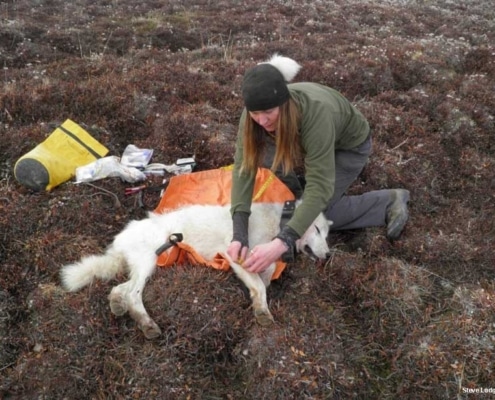
Anderson hadn’t originally planned to center her research around wolves in this area. She had been working with the Nunavut Department of Environment on recovery efforts for Peary caribou (Rangifer tarandus pearyi)—the northernmost herd of the ungulates in North America. But getting government approval for collaring caribou or even muskoxen from the Inuit proved difficult. “It’s seen as disrespectful that you go and disturb an animal, then don’t use it,” Anderson said. The Nunavut government and communities were more supportive about collaring wolves, so she and her colleagues decided to examine how wolf predation affected the population of the Peary herd, which has experienced declines in recent decades.
In a study published recently in the Journal of Wildlife Management, Anderson and her colleagues fitted GPS collars on wolves captured on Ellesmere Island from 2014 to 2017. Each year, they would replace collars on some wolves and collar new individuals. While they didn’t fit any new collars in 2018, some of those placed in previous years were still working, so they had some data from that year. In total, the team had collars on individuals from five packs on Ellesmere and one pack from the neighboring Axel Heiberg Island. Wolves can move freely between these islands over sea ice for most of the year.
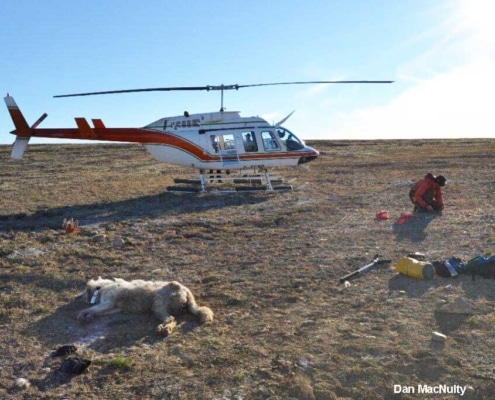
Finding kill sites
The researchers used the location data to determine sites where wolves likely killed prey. Then, they set out on treks—sometimes for weeks at a time—across the mountainous island to examine the evidence. They ran algorithms to determine where the most kill sites were. Then, a helicopter or a small Twin Otter plane dropped the team off near these areas. The team took a shotgun with them for protection. But they didn’t really plan to use it, since there aren’t many polar bears (Ursus maritimus) in the area due to a low density of seals. Anderson said she never felt threatened by bears or wolves. The latter are so tolerant of humans that they would brazenly steal wrenches from the pockets of helicopter engineers.
The tolerance the wolves have for humans there was a blessing in other ways—film crews often traveled with Anderson’s team looking to capture footage of hunting and denning behaviors. They also helped with funding and logistics.
On their journeys, the team would visit as many suspected kill sites as they could. The evidence for these remained on the landscape for some time in the barren area, especially since other scavengers didn’t disturb them. “We’d just blitz it,” Anderson explained about the treks. The fact that it never got dark meant they often worked very long days before realizing it was time to stop.
When the team wasn’t spending time with the wildlife, they spent it with the local people. The team would wait out the weather in the communities of Grise Fiord or Resolute Bay, which is on the neighboring island of Cornwallis. “It gives you plenty of time to hang out with the community members and build relationships,” Anderson said, adding that this learning from local knowledge can help to frame the results and inform management recommendations.
Analysis of their data revealed the wolves are difficult to keep up with. “They are pretty much always moving unless they are sleeping or eating,” Anderson said. In fact, one collared female dispersed more than 1,000 kilometers from Axel Heiberg to the southern coast of Devon Island.
A stable predator-prey dynamic
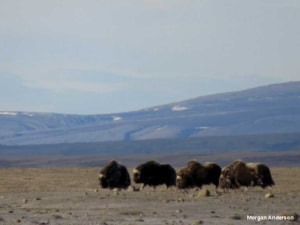
muskoxen (Ovibos moschatus)
The evidence also pointed mostly to wolves preying on muskox calves and adults—during the study years, Peary caribou weren’t abundant in the area. But the muskoxen are only part of the story, Anderson said. The wolves are also preying a lot on Arctic hare (Lepus arcticus). But they eat these smaller mammals rather quickly and almost completely, so it’s hard to tell from GPS collar data when they catch hares. Wolves also don’t really leave remains of hares on the landscape. Conversely, scientists can find the bones of past muskoxen dating back centuries lying around the outside of wolf dens.
The researchers aren’t sure about the specific metabolic needs of Arctic wolves compared to their cousins farther south, but they roughly estimated that each individual wolf would need to kill 115-228 hares per year, and a pack would need to take down about 44 muskoxen per year.
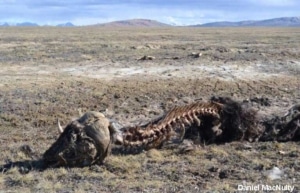
Population estimates reveal that both the wolves and the muskoxen they prey on have relatively stable populations on Ellesmere. This is good news, Anderson said, but it also means that anything that throws that relationship out of balance may spell trouble for the Peary caribou in the region.
For example, in other parts of Canada, higher moose populations in some areas due to logging practices or oil and gas cutlines have led to an unnatural boost in gray wolf (C. lupus) populations. This, in turn, means that they incidentally kill more woodland caribou in these areas.
It’s unclear whether something like this may happen in the far north as well, but Anderson said it’s something that wildlife managers should pay attention to, especially as factors like climate change or increased human presence could throw predator-prey dynamics out of balance in Ellesmere.

The Wildlife Society Logo
About the Author: Joshua Rapp Learn is a Science Writer at The Wildlife Society.
This photo essay is part of an occasional series from The Wildlife Society featuring photos and video images of wildlife taken with camera traps and other equipment. Check out other entries in the series here.
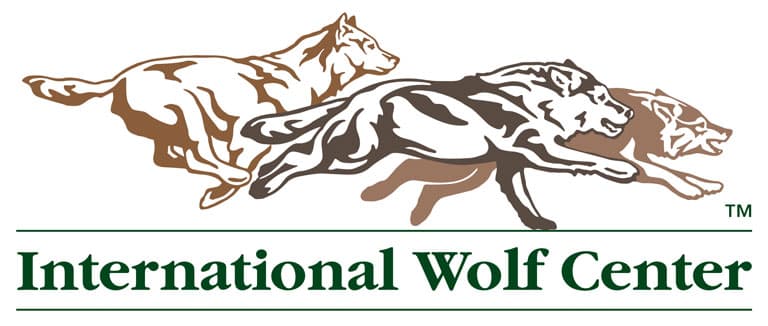
The International Wolf Center uses science-based education to teach and inspire the world about wolves, their ecology, and the wolf-human relationship.
